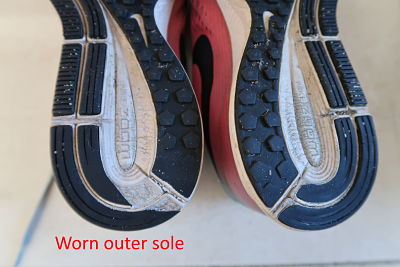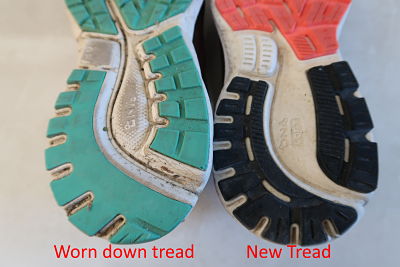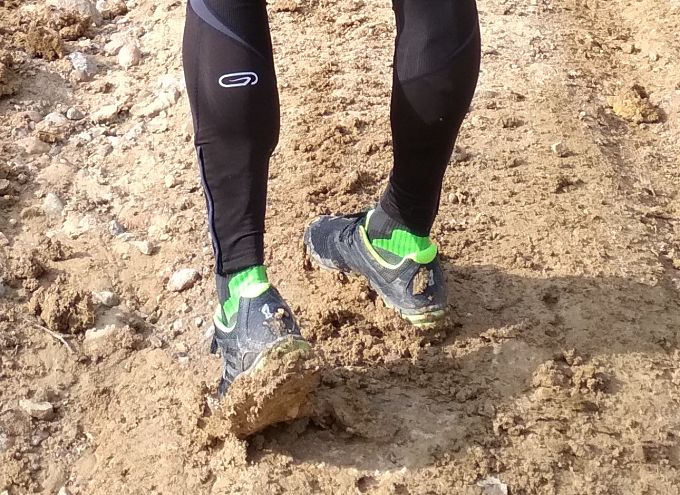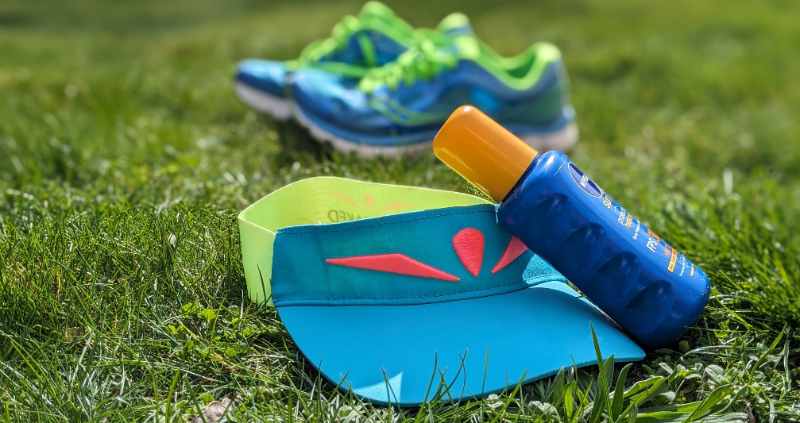When to Replace Running Shoes
Ever wondered when to replace running shoes?
Let's face it, running shoes can be very expensive and yet manufacturers have great ways of persuading us that we need to replace running shoes on a regular basis. Some say 6 months, others 300 - 500 miles (480 - 840 km) and others say we should be rotating several different pairs of running shoes at once.
Listening to all that seems quite scary on your bank balance but if you are savvy and can spot when you "really" need to replace your running shoes, then you could save yourself some money and a running injury too.
Why we need to replace running shoes
Like all shoes, running shoes are always going to have a limited life span. But why is it important to change them if they still look good or still feel comfy?
Generally think of running shoes as having 2 main areas that could wear out -
- Firstly the parts that you can see, such as the upper mesh, heel counter and the outer rubber sole. If you are confused by any of these terms, have a look at Running shoe terms.
- Secondly the parts that you can't see, such as the inner sole which provides the cushioning and comfort underfoot.
If any of these parts are worn down, torn or causing discomfort, then there is a likelihood that your running gait and form will be affected and this could lead to a running injury or direct trauma. This is when to replace running shoes.
So in essence we need to replace running shoes in order to prevent injury.
Sometimes you don't even know that your running shoes are a bit past their best, so look out for the tell tale signs below.
Signs when to replace running shoes
Personally I feel that you should take the manufacturers advice a bit lightly. We don't all run on the same surface or run the same distance at the same pace and with the same running style. Therefore, saying we should change our running shoes every 6 months or every 400-500 miles, can be seen as quite broad statements.
Imagine a 150 lb/68kg runner running on tarmac but who heel strikes or scuffs their feet. Now imagine another runner of the same weight but who runs on woodland tracks with great agility and good form. Both runners will wear their shoes down differently and over a different time scale. Therefore the best thing is to look at your running shoes and judge yourself.
Knowing when to replace running shoes is not difficult if you know what to look for. If you can say yes to any of the following, then consider looking for another pair of running shoes.
- Tears on the upper fabric or signs that your toe is starting to push through the upper mesh.
- The outer sole has worn down so that you can see the white midsole. Areas to check are the ball of the foot and the outer heel edge.
 Worn outer sole running shoes
Worn outer sole running shoes- The tread on the outer sole is very smooth and no longer has much grip. Check them like you check your car tyres.
 Worn tread outer sole running shoes
Worn tread outer sole running shoes- One shoe is more worn down than the other or the shoes don't feel equally balanced.
- The shoes don't feel comfortable anymore and the inner padding seems to have squashed down. A tell tale sign is seeing crinkling or horizontal lines on the outside midsole.
- You are starting to feel the ground underneath whereas before your shoes felt all cosy and comfy.
- You are starting to get blisters which you din't have before or your are developing new injuries that might be shoe related.
How to Make Your Running Shoes Last Longer
Knowing when to replace running shoes is important to stop injuries but if you could eek out the life of your shoes for a wee bit longer, that is a big bonus.
All shoes will one day have to be retired to the gardening shoe rack, but with a bit of extra TLC you can make them go a bit longer. Here's how:
* Only wear your running shoes for running. If you wear them for other activities then not only are you adding milege to them, but you are creating an alternative wear pattern which might break the shoe down faster.
* If you get caught in downpour or land in puddles, then make sure to dry your shoes out well. Stuff them with newspaper as tight as you can and leave them in an airy open space. Don't use the tumble dryer or hair dryer as that can damage any synthetic material.
* If your running shoes need a clean, best to do it by hand. Remove shoes laces and chuck those in the machine or wash by hand. Your running shoes however should not be fully soaked. Instead dip a cloth into a mild detergent and warm water and gently rub dirty areas. Then stuff your shoes with newspaper and leave out to dry. Read the full page on how to clean running shoes.
* Some people (me included) like to rotate shoes. Theoretically, this gives the midsole time to plump itself out again, although apparently there is no real proof that this works.
* Wear the right shoe for the right surface. I have a cushioned pair for long road runs, a less cushioned and lighter pair for speed work and a trail running shoe. Wearing trail shoes on the road will definitely wear the tread down more quickly.
When the time really does come to say "adieu" to your trusty running shoes then head to the running shoe shop and start browsing/saving for your next pair. How to choose running shoes.
------ When to Replace Running Shoes -------
- Home
- Running Shoes
- When to Replace Running Shoes



